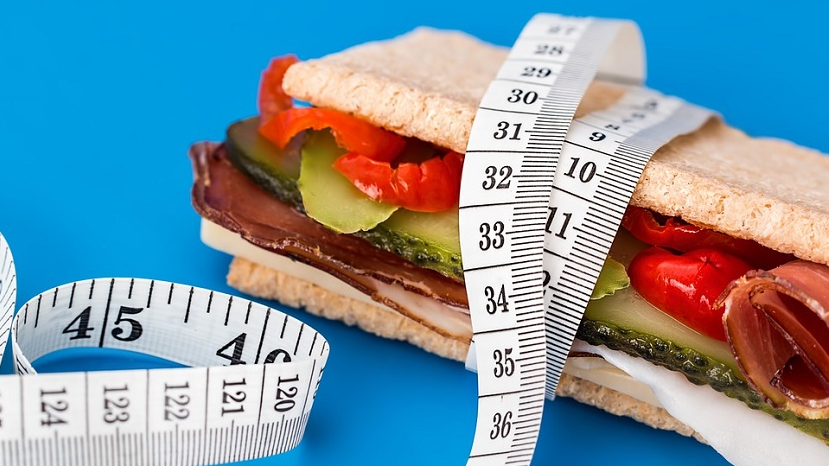
It is said that fitness is 20% exercise and 80% nutrition. Diet and lifestyle modification form the cornerstone of every therapy for weight loss. Most of us have attempted to follow a diet for weight loss at some time or the other in our life. More often than not, we end up surfing the internet to find the best possible diet. The problem is that there are hundreds of fad diets available on the web and it is extremely confusing to choose one.
The golden rule of weight loss through a diet is, cutting down the caloric intake by 350-500 kcal per day to enable a weight loss of 0.7-1.0 kg per week. The weight loss differs from individual to individual depending on age, body type, initial weight, activity level, compliance etc. The process of weight loss must be slow and gradual to be consistent.
However, the internet and social media are continuously buzzing with very-low-calorie crash diets that claim rapid results. Most people get lured to try out these diets to get a quick weight loss. Unfortunately, the more rapid the weight loss, faster is the weight regain. Some of these unsupervised diets are also very low in calories and nutrition and can have a negative impact on your nutritional status. Thus, it is important to follow a supervised program wherein both quality and quantity of the diet is taken care of and best weight loss outcomes can be obtained.
In this article, we discuss the pros and cons of five commonly trending diets.
1. PALEO DIET
Paleolithic diet also known as ‘caveman diet’ or ‘stone age diet’,dates back to the hunting-gathering era, wherein human beings relied on foods available in the environment almost 10,000 years ago. It includes meat, fish, eggs, vegetables, fruits, nuts & seeds and excludes all the foods that have been introduced to man after the onset of agriculture. This diet prohibits consumption of whole grains, pulses, dairy foods, sugar, processed foods & oils.
This diet has been reintroduced with the thought process that the genetic make-up of human beings has not changed much since then and is still tuned to eat foods from the paleolithic era. It is believed that the incidence of chronic diseases like type II diabetes mellitus, heart disease, high blood pressure, etc. have increased because of moving away from the paleo diet to a westernised diet.
Benefits: As this diet demands restricting processed foods and is rich in fiber and protein, it has shown to have positive weight loss outcomes. It is said to lead to improved glucose tolerance, lower triglycerides and better blood pressure control.
The golden rule of weight loss through a diet is, cutting down the caloric intake by 350-500 kcal per day to enable a weight loss of 0.7-1.0 kg per week. The process of weight loss must be slow and gradual to be consistent
Drawbacks: Being devoid of dairy foods, this diet can lead to calcium and Vitamin D deficiency which can adversely affect the bone health. It is also said to be on the expensive side and not everyone can afford to go paleo.
Secondly, this diet was being consumed in the era when human beings traveled for miles together to hunt for food, but today technology and machines have made the man totally sedentary. It is a combination of lifestyle along with many other factors rather than the diet shift alone that has made man gullible to various chronic diseases. Also, it is difficult to accept that our genetics have not changed much over the last 10,000 years.
2. KETO DIET
Ketogenic diet became famous when it proved to be successful in reducing the number of seizure episodes in children suffering from epilepsy. It has also shown to be effective in the treatment of neurological diseases like Alzheimer’s disease, autism, Parkinson’s disease, etc. Off late, it is trending for its effect on weight loss.
A ketogenic diet is a high fat, high protein and a very low carbohydrate (<20 gm/day) diet that compels the body to go into ketosis. Normally our body derives more energy from glucose. By reducing carbohydrate intake this diet forces the liver to use the energy from fat in the form of ketones.
Benefits: As it is high in proteins and fats it gives early satiety and curbs appetite. A very low carbohydrate intake increases fat breakdown to obtain energy. The body also spends more energy to metabolize fats and proteins. Keto diets have also shown to have positive effects on mood and cognition.
Drawbacks: The first preference of the brain for energy is glucose and not ketones, hence it is not advisable to disturb the normal physiology of the body. This diet is contraindicated for people having liver disease, kidney disease, diabetes, active gallbladder disease, history of acute pancreatitis, impaired gut function, etc. It can also be difficult to follow for the vegetarian population.
For weight loss, this diet can be tried out for a short duration (2-3 weeks – 6-12 months) strictly under the supervision of a qualified ketogenic dietician and physician. The transition from a keto diet to normal diet also needs to be handled well to prevent weight regain.
3. ZONE DIET
The zone diet, developed by Dr. Barry Sears, advocates 5 meals a day with a correct balance of carbohydrates (2/3rd), proteins (1/3rd) and fat (little bit – only monounsaturated fats) in every meal. Along with the proportions, this diet also focuses on the glycemic index of carbohydrates. Glycemic index is the ranking of carbohydrate foods based on the speed at which these foods increase the blood glucose levels. This diet also includes antioxidants like omega 3 fatty acids and polyphenols which help to fight inflammation.
Benefits: It promotes weight loss by restricting total calories and providing satiety. The low glycemic index foods prevent rapid insulin spikes which help to maintain insulin sensitivity and delays the subsequent meal.
Drawbacks: This type of diet can be time-consuming as it advocates 5 meals a day and the macronutrient composition of every meal has to be taken care of.

4. VEGAN DIET
A vegan diet includes all plant-based foods like grains (preferably whole grains), vegetables, fruits, nuts & oilseeds. It excludes all the foods that come from animals like meat, egg and dairy. In addition, this diet also emphasizes on limiting the intake of foods high in salt, sugar and fat. This diet started trending when there were claims made by people that their diabetes was reversed by going vegan. However, there are no studies to support these claims. The reversal could be because of fat loss and improvement of insulin sensitivity as a result of the diet
Benefits: As this diet is very rich in fiber, phytonutrients and low in fat it helps in weight loss, controlling sugars, blood pressure & cholesterol. Also decreases the risk of heart disease and certain types of cancers.
Drawbacks: The exclusion of eggs, dairy and meats could lead to calcium, iron, vitamin and mineral and protein deficiencies. A high fiber intake can also lead to gut irritation in some.
5. INTERMITTENT FASTING
Intermittent fasting can be done in various combinations, with a pre-defined fasting and non-fasting period. The longer fasting period and shorter non-fasting period decreases the overall calorie intake and leads to weight loss.
Intermittent fasting can be followed either by fasting whole day (24 hours) or by having time-restricted feeding. Whole day fasting can be done once a week, twice a week or on alternate days and time restricted feeding involves fasting for a certain number of hours (16 hours) and eating during the remaining number of hours (8 hours) each day.
Benefits: Fasting decreases the overall calorie intake and also compels the body to utilize fats for energy, this way it promotes weight loss.
Drawbacks: Long hours of fasting can lead to overeating in the non-fasting period. Fasting in the 1st half of the day can leave you with a feeling of lethargy which can hamper your concentration at work.
All the diets mentioned above and many others which exist when accompanied by some form of physical activity will lead to weight loss. However, the million-dollar questions are-How to choose the right diet? How to maintain the quality of the diet? How to avoid the side effects? How to taper the diet? For how long to continue the diet? When to stop? And so on…
Well, these are some questions that only a qualified nutritionist can answer. With correct guidance, a reasonable weight loss can be achieved! Last but not the least, don’t start on a diet that has an expiration date, focus on a lifestyle that will last forever.
(Mariam Lakdawala is a Mumbai-based dietician and Dr. Aparna Govil Bhasker is a noted bariatric surgeon. The views expressed are personal)